

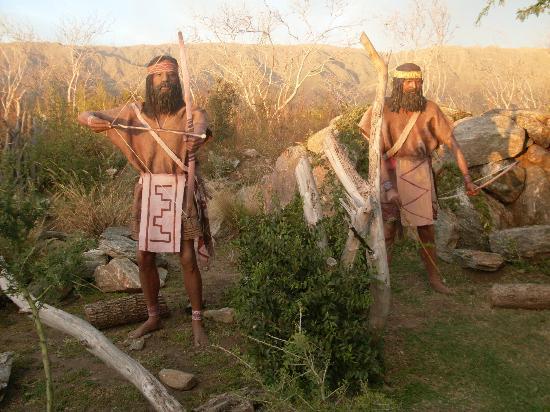
All this extension of the northwest of Cordoba treasures a great cultural and historical heritage inherited from the original settlements of the place. It is possible to find in the area remains of prehispanic paintings, a faithful testimony that reaffirms the vernacular possession of these lands. The serranos forests where today settle populations like Villa de Soto, served as habitat to the Helen, better known as Indians comechingones. Often it is common to find in these latitudes vestiges of the pierced stones that the natives filled with water to use as mirrors in the observation of the stars. This is what we have inside the venture: large viewpoints on rocks that have these observatories. The Hispanic inheritance brought with it other things, customs, other language, and other religion, that became involved with the native modes, creating fusions in some cases and ruptures in others. The period of colonization has left its mark in this strip of territory that is manifested in the constructions that date from the XVII and XIX centuries, such are the constructions inside the estate that start as "comechingones" continues with the imported "Quechua" influence, Followed by "Quechua-Hispanic" and lastly "Hispanic." All that cultural treasure is the one we are presently trying to preserve.
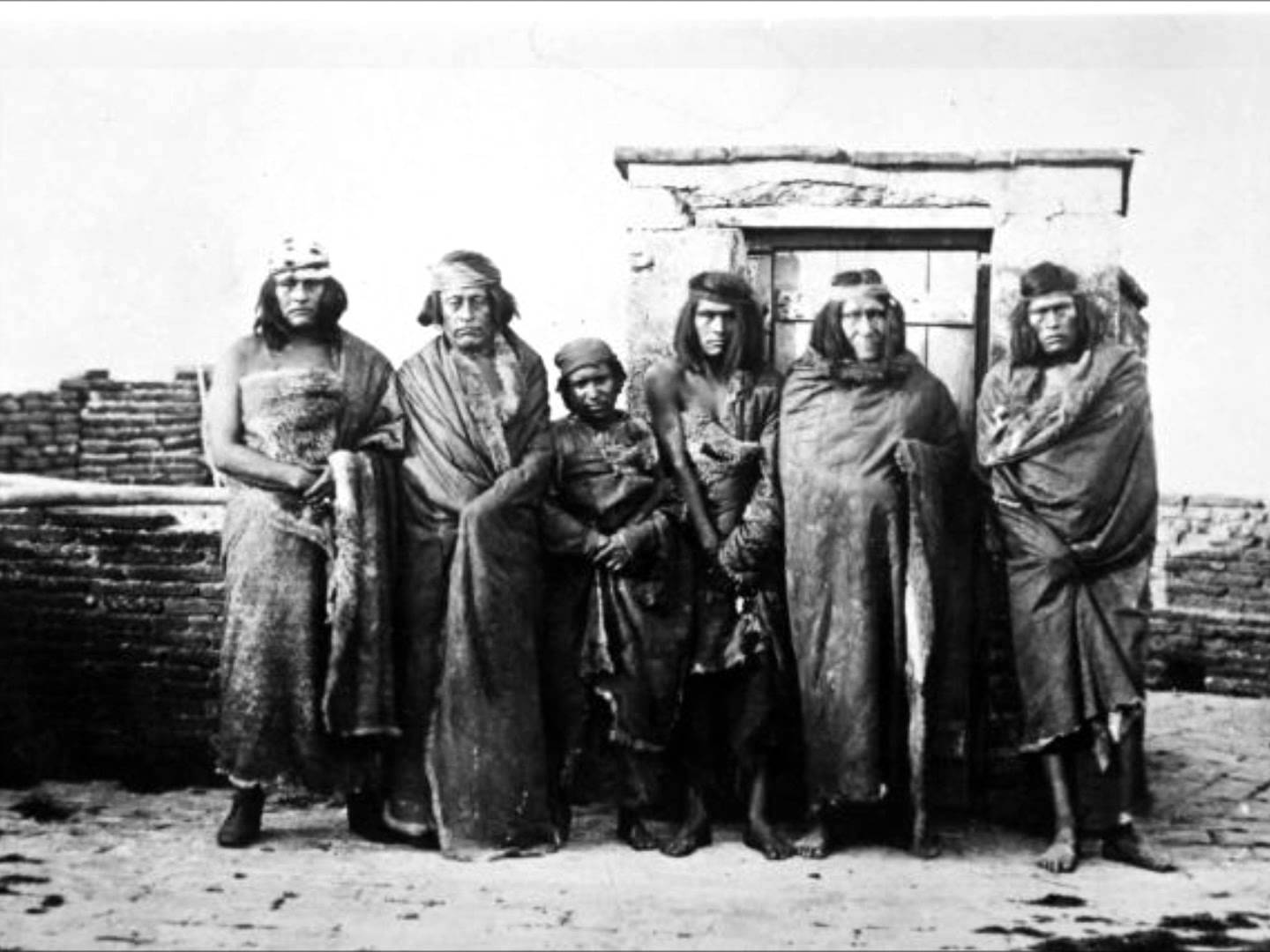
The chronicles of the sixteenth century mention that the last comechingones were gathered in the time of the algarrobo to collect, to grind and to eat several towns. The morterales that are inside the complex AMONTONED STONES could be indicators of that activity. As the area of Pichanas is much mentioned in the chronicles of the sixteenth and seventeenth centuries, especially for its carob trees. Another point of historical doubt is that the reason for the name of "PIEDRAS AMONTONADAS" may also be that it is not or was for the houses with stone walls, but for the "cairns" that the Indians put to mark hunting territories Or collection. Thing that within the property there are several. However, these limits were very dynamic and constantly changing over the years.

The chronicles of the sixteenth century mention that the last comechingones were gathered in the time of the algarrobo to collect, to grind and to eat several towns. The morterales that are inside the complex AMONTONED STONES could be indicators of that activity. As the area of Pichanas is much mentioned in the chronicles of the sixteenth and seventeenth centuries, especially for its carob trees. Another point of historical doubt is that the reason for the name of "PIEDRAS AMONTONADAS" may also be that it is not or was for the houses with stone walls, but for the "cairns" that the Indians put to mark hunting territories Or collection. Thing that within the property there are several. However, these limits were very dynamic and constantly changing over the years.

The Comechingones called themselves Henia to the north, and Kamiare To the south, (the two main groups) subdivided into approximately ten partialities.
The appellation "comechingón" seems to be the deformation of a pejorative word that gave them the ethnic group Sanaviròn Or sanavirona that towards century XV, coming from the interfluvium Rìo Dulce And the Rio Salado (current province of Santiago del Estero), invaded the ancestral territories of the Hení-Kamiare
Los Sanavirones They were called "kamichingan", which in Salavin language seems to have meant vizcacha Or 'inhabitant of caves', due to the type of semi-underground housing of henia-kamiare. However according to the Chronicle of conqueror Spanish Jerome Bibar, written in 1558, the nickname was given directly by the Spaniards to hear the henía war cry: "Kom-chingôn!" According to Bibar this cry would be translated "death-to-them" ( To the invaders). The Salavinons are likely to "understand" and "translate" with mock such a war cry from their enemies with the word "kamichingan".
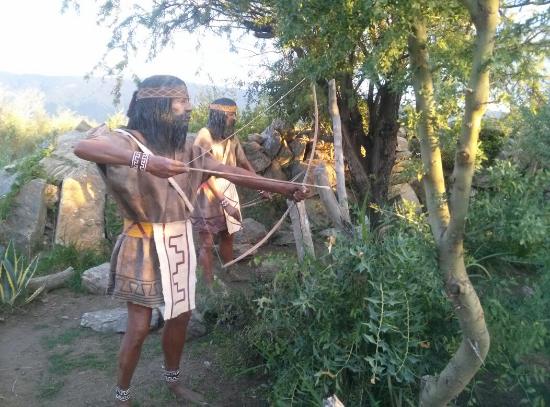
The Comechingona culture possessed undoubted influences of Andean origin, practicing the textile industry with Auquènidos wools, basketry, metallurgy and ceramics or medically elaborated choroplasty. They were sedentary, hunter-gatherers (especially Carob tree And other fruits: molle, piquillín , Chañar y Coconut Of the palm tree Caranday As well as potato growers potatoes , corn , Pumpkin , Beans , quìnoa , Were also in possession of an incipient cattle ranch and poultry farming to possess large herds of Flames And chickens as theMountain turkeys Although their diet came in part from thehunting.
Many anthropologists tend to regard the hiaia-kamiare as a very distinct group huárpido Two features of the comechingones that have attracted the most attention are their caucasoid appearance (men were already bearded at puberty), their relatively tall carvings for their time (about 1.71 cm in males), and the existence of a frequency Of perhaps 10% of green-eyed individuals.
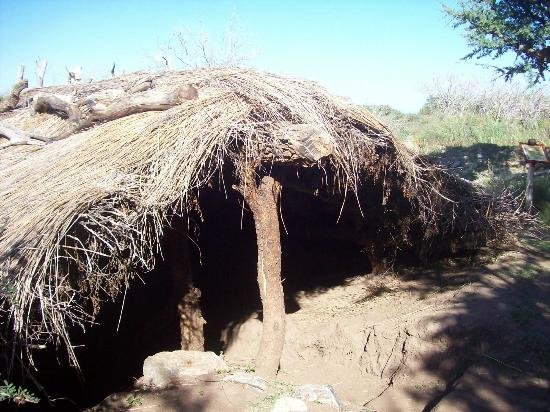
Although the studies reveal a predominance of huarpido (apparently the oldest), in the etnogénesis Of this town, over thousands of years, also influenced lineages pàmpidos And the Amazon, this is explained by the geographical location of its territory, which was the crossroads of the various prehistoric population currents of the territory that today is Argentina. The other striking feature was that of their houses: stone houses, collective and semi-underground To better withstand the cold (even the snowfall) of the southern winter.
This town has left interesting relics, mainly Pictographs Parietal or rupestrian and Petroglyphs Of great abstraction including graphics such as those found in Cerro Colorado Candonga y Ongamira Center of the province of Córdoba, and the site of Inti Huasi, In the northwest of the province of San Luis, another of the important deposits is that of Los Molinos 75 kilometers northwest of the city of Río Cuarto is the town of Alpa Corral , alpa In the language "Comechingona" means stone, that is to say: Corral de Piedras, where you can see in the mountains the territorial divisions of these inhabitants made with stones and are called Pircas.
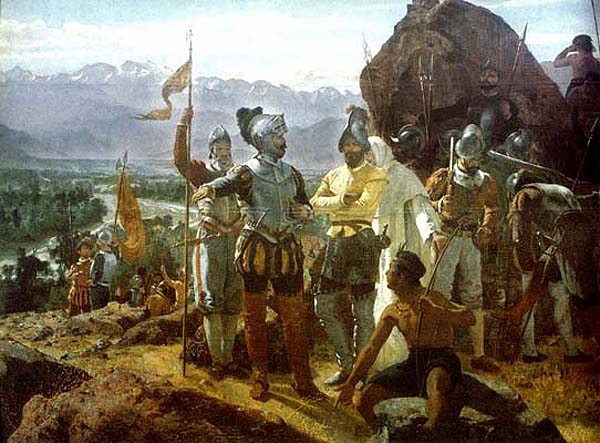
It is important to bear in mind that the hênia-kamiare or "comechingones" possessed their own language, although currently in the territory that inhabited the toponymy abounds in Sini or Quechua; This is due to the fact that the Spanish conquerors since the 16th century imposed the sini (dialectized) rune as a "general language" to communicate with the very diverse Aboriginal ethnic groups located in Cuyo, Cordoba, Santiago el Estero, and Argentine Northwest. Little is known of their cults, the chronicles recount that they "particularly" worshiped the moon and that perhaps for this reason they preferred to fight at night, the evident thing is that they had several cult centers or sanctuaries in which they congregated, of such centers Are known sites of geography: elevated hills, clean water springs, caves and "gullies" in which the stars were especially appreciated; BETWEEN THOSE WHO ARE WITHIN OUR PLACE: THE INDIAN WELL, LOMA MOCHA, MORRO BLANCO, BALCON DEL RIO
Among their ceramics are the "rough" statuettes representing women and men, such statuettes have a very stylized appearance, however their "sex" is discovered because the parts that represent the genitals are highlighted, another feature of many The statues: the gluteus highlighting has given rise to a misunderstanding: the supposition that the Steatopia Was common among henia-kamiare, however the existence of steatopigia has been uncommon or rare in this population; The explanation is another, of the symbolic scope: the highlighting in the representation of genitals and buttocks in the statuettes has most probably been due to a practice of Nice magic Related to fertility cults.
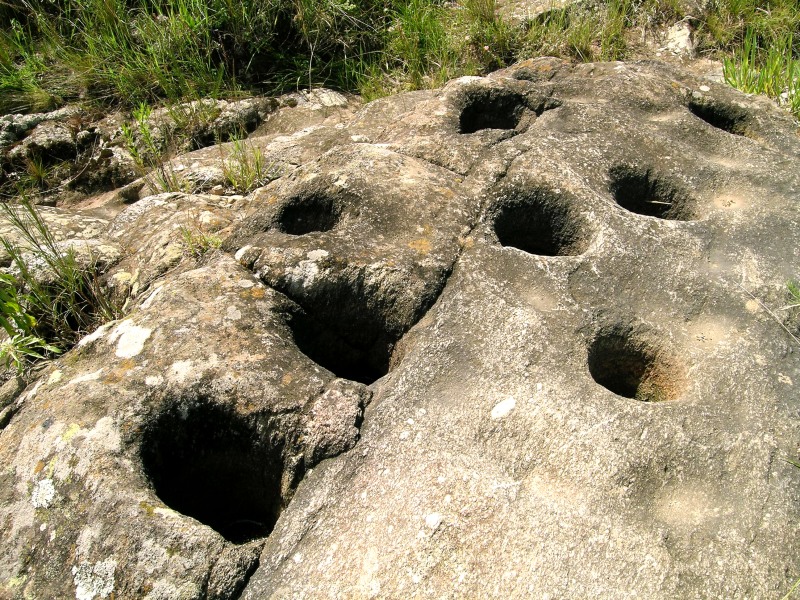
Toward 1550 The two main groups (Hénia and Kamîare) were located roughly the first north of the 31st parallel and the second south of the parallel, but - obviously - a geodetic limit was not an absolute limit for the displacement of populations.
The whole of the Kamiare inhabited in the southern sector of the Sierras Pampeanas mainly in what is today the northwest of the province of San Luis, being the main subparcialidades the following: · Saleta (in the western slope of the Sierra de Comechingones, Including the area of the city of Merlo. Nogolma (immediately to the west of the above mentioned one, being its main solar Valle de Conlara )
Michilingual (to the west and southwest of the two previous ones, the Michilingual sub-sociality was the most conspicuous of the present province of San Luis and its area of extension arrived in the west until the Mountain range of the Quijadas that served him of limit with the huarpes of the group Huanacache In the south the michilingüe confined with the Taluhet In the mountains of Varela and the Sierra del Tala). All of the Hênia Inhabited mainly in the sector of the Sierras Pampeanas called Sierras de Còrdoba From north to south and from east to west its main biases towards the fifteenth century were varied.
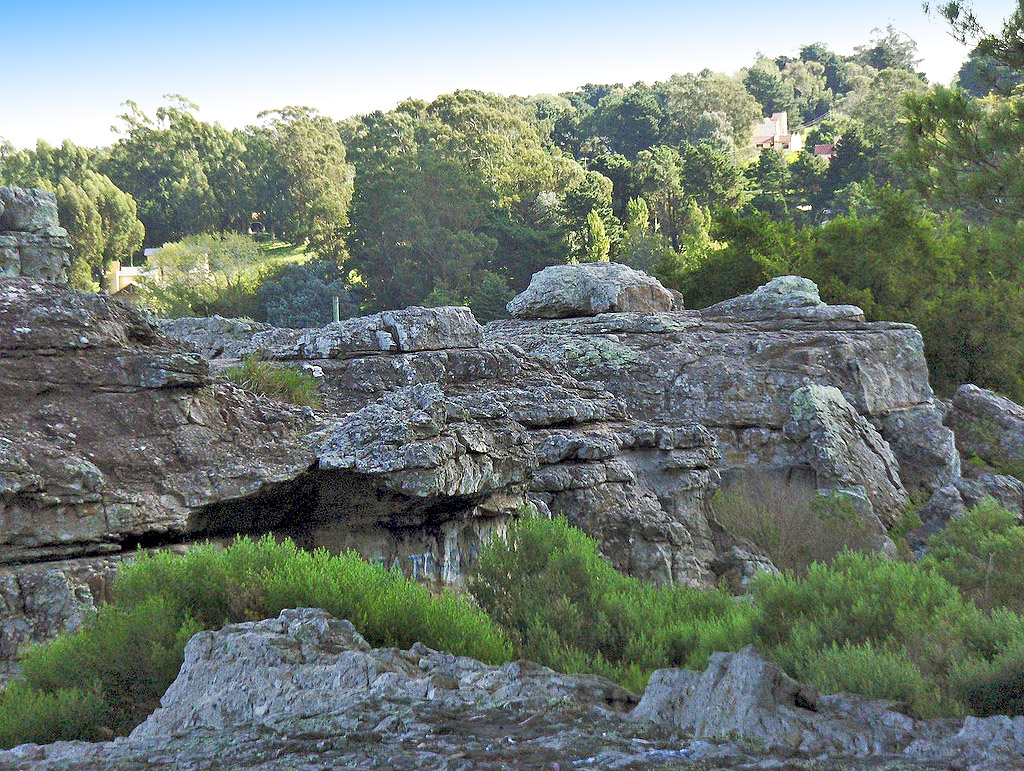
Mogas (In the Sierras de Ambargasta, bordering on the area of the Salinas Grandes with the
olongasta And to the north and east with salavon or "sanavirones") current Cruz del Eje
Caminigas (Immediately to the south of the "mogas", inhabited the areas where they are Quilino y Tulumba).
Guachas o Gualas (South of the road), in the area of Totoral
Chine (West of the Guacha), in the area of Dean Funes y Cruz del Eje until Salinas Grandes).
Sitón (at Valle de Punilla , the eastern slopes of the Sierra Chica and, to the west, towards the present limits of the province of Cordoba with La Rioja).
Aluleta (In the eastern foothills of the Sierra Chica, southern Valle de Punilla and the
Valle de Paravachasca.
Naure (In the central and southern sector of the Valle de Traslasierra Bordering to the south with those already mentioned - of the hênia group: room and the nogolma).
Macaclita (at Valle de Calamuchita And the eastern slopes of the Sierras de Comechingones to the vicinity of the city of Río Cuarto having by eastern and southern neighbors to the het of the taluhet bias.
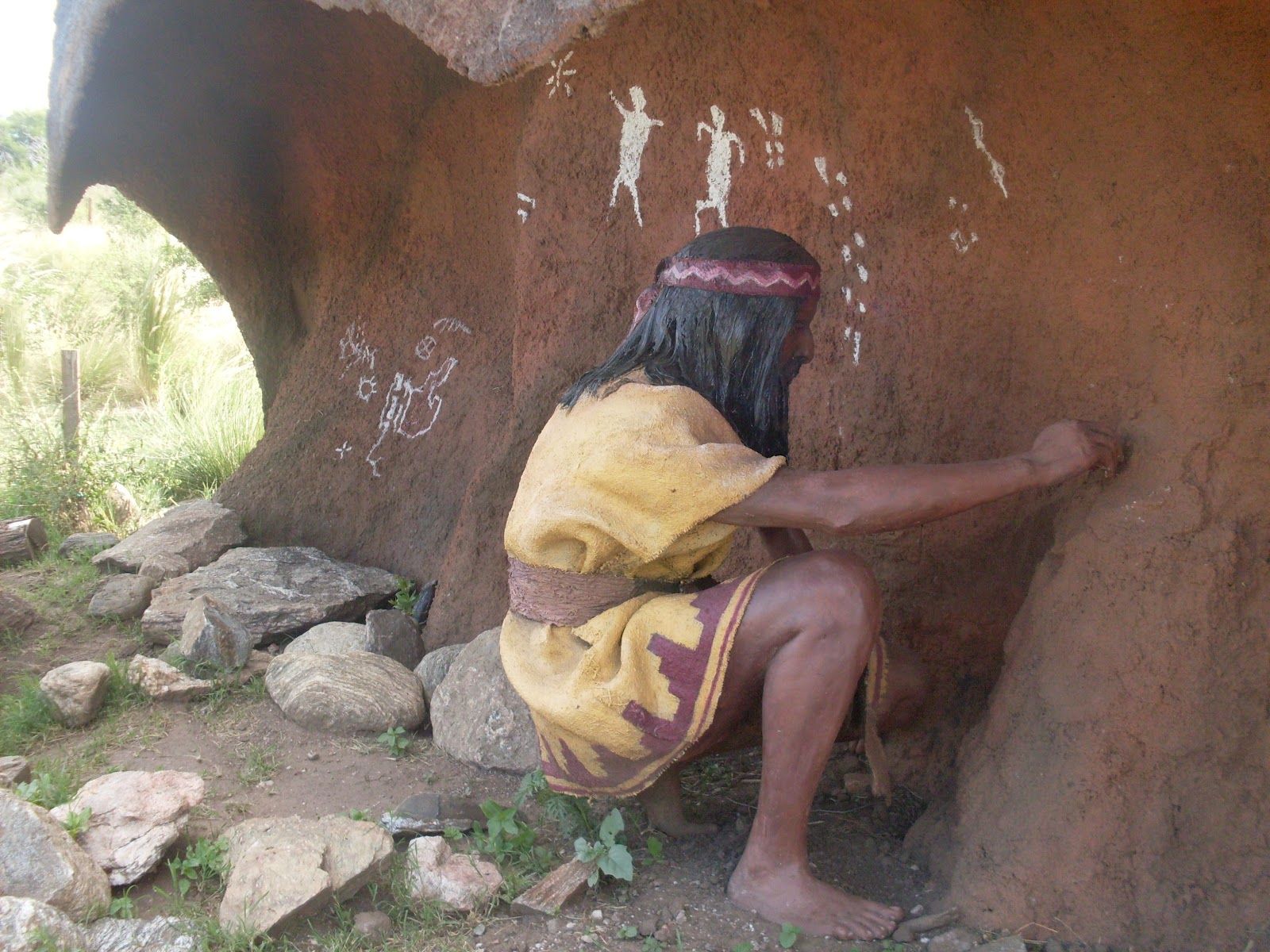
Perhaps the hênia-kamiare trace their origins to the ancient Ayampitín culture (at least existing from the 6,000 a.C) archaeological culture that has left traces until in Tarija,But for the moment (May 2005) there are no data that allow us to say with full certainty that the Ayampitín culture (name of a site in northwest Cordoba) corresponds absolutely to a "formative moment" of the ethnic group of the hênia And kamiare or "comechingones". Almost certainly the call Cultura Ongamira, Arisen around 4,600 BC is a direct precedent of the Comechingón culture, although it is only possible to speak of a Comechingón culture in the period from 500 to 1600 AD, diluting this culture with the Spanish-Creole after the XVI century (one of the last settlements With a typical "comechingona" culture was located in the town Nono Until 1750, after 1,600 corresponds to speak of a culture "comechingón" - Spanish.
The clothes of the hiaia-kamîare evidenced the influence walked: they wore poncho , chiripá y Thejob, During the winters they added "wool jackets" and leather garments to their clothing. The men used to adorn themselves with small elongated and flat plates of metal (copper, silver and gold) called "chákiras" that hung of their hair. The women were perfumed with the juice of a fruit that they called suico and exornaban with painted conches.
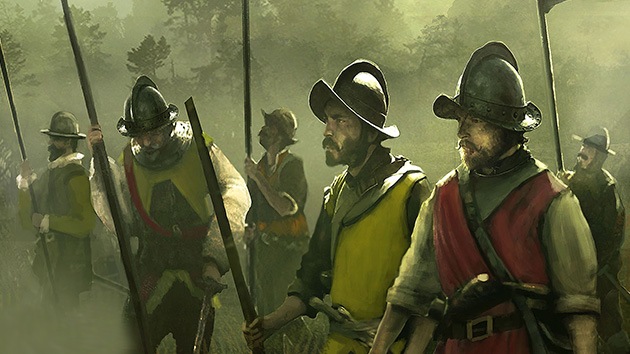
Almost without a doubt, with the arrival of the conquerors, as it happened to almost all the pre-Columbian American ethnic groups, a great part of the population perished because of the epidemics against which they still lacked immunity (especially the smallpox, measles, And certain types of flu, This greatly facilitated the Spanish conquest, on the other hand the physiological similarities made the survivors easily confused with the Europeans and were part of the new population Creole. Even at the beginning of the 19th century, families (such as those of the Tulián and Guayán) who were descendants of the henia and the kamiare lived in areas, by which time a large part of the families of the whole henia were mixogenized With sanavirones (or salavinones) and with Spaniards.
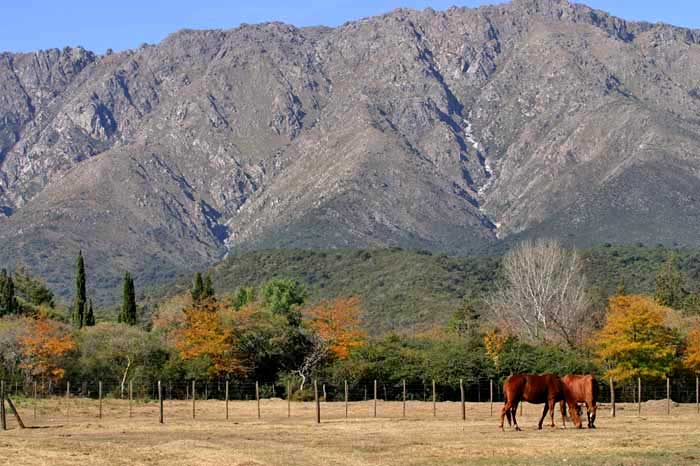
A curious contribution has left the "comechingones": the so-called "tonada" Cordobesa (from Cordoba Argentina) or "singing" characterized by the extension as humored of the vowels, this tune or accent of Spanish spoken in Cordoba Argentina, Early nineteenth century is found mainly in mountainous areas, although it is prevalent in most of the provinces of Cordoba and San Luis.
Such a tune or "cantito" or tonal curve can be phonologically exemplified as follows: If a speaker from Madrid (Spain) pronounces the word "bring it to me" so that it is broken down into 3 syllables: "tráemelo" (he will bring it to me), a speaker With the Cordoba tonal curve (from Cordoba Argentina) pronounces the same word in four syllables as follows: [tra-é-me: -ló] (the colon after the "e" accentuated means the elongation of that vowel). Antonio Tovar mentions five dialect Of the "comechingón" language: main, yuya, mundema (or "indama"), kama and umba although at present no precise information can be given on the distribution of such dialects.